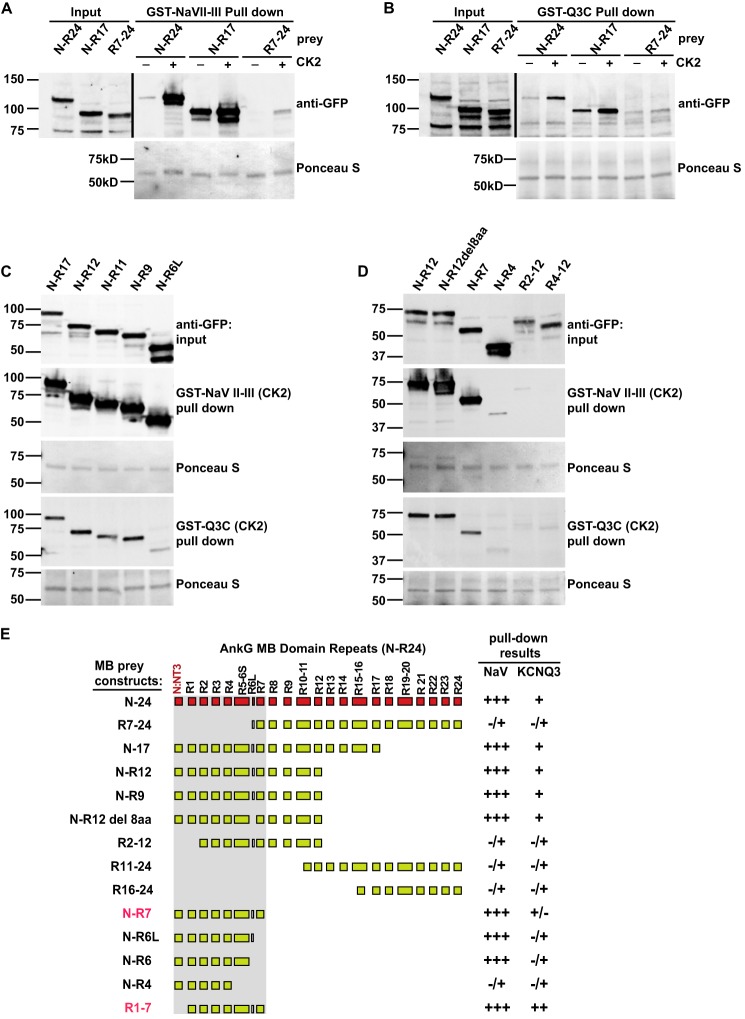FIGURE 5.
AnkG-MB R1–7 is critical and sufficient for binding both Nav1.2 and KCNQ2/3 channels. A–D, GST pulldowns of AnkG-MB truncations. A and B, analysis of large fragments shows that interaction of both channel with AnkG is primarily mediated by the N terminus through R17 region and is CK2 phosphorylation-dependent. First through third lanes, anti-GFP Western blots of AnkG “prey” input. Fourth through ninth lanes, pulldown results. Upper row, CK2 phosphorylation-dependent binding to the GST-Nav1.2 DII-III loop (A) and GST-Q3C (B); lower row, Ponceau S staining shows equal loading of GST baits. C and D, further specification of the binding region using deletional analysis. For each AnkG-MB prey: top row, prey input; second row, prey pulled down by the CK2 phosphorylated GST-Nav1.2 DII-III loop; third row, Ponceau S stain showing equal loading of baits (note: for N-R12 and N-R7 lanes, prey pulled down by Nav1.2 is detectable); fourth row, prey pulled down by the CK2 phosphorylated GST-Q3C; fifth row, Ponceau S stain for GST-Q3C. E, summary of mapping results from A–D (R11–24 and N-R6, not shown). Pulldown band intensity was rated as very strongly positive (+++), strongly positive (++), positive (+), weak but still detectable (+/−), and barely detectable (−/+).

